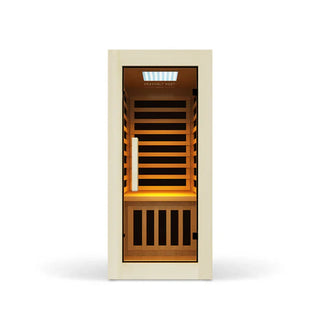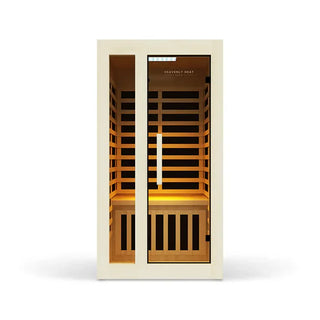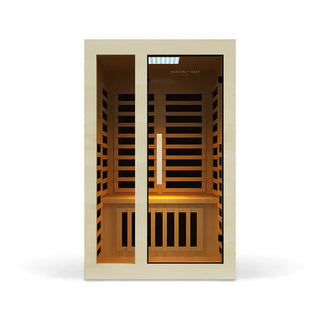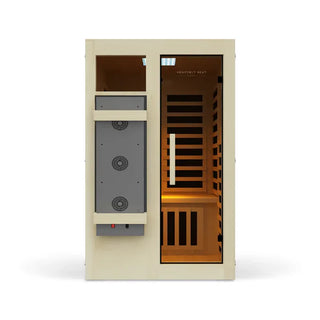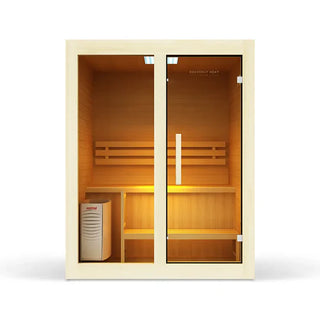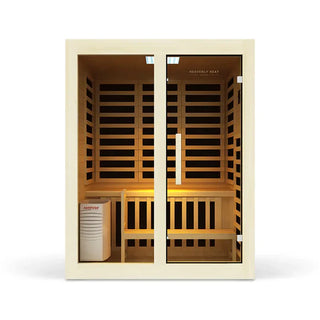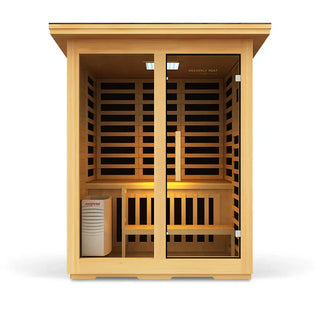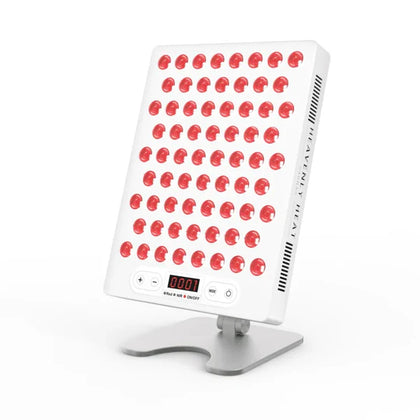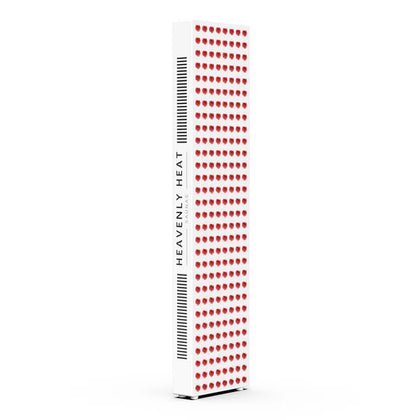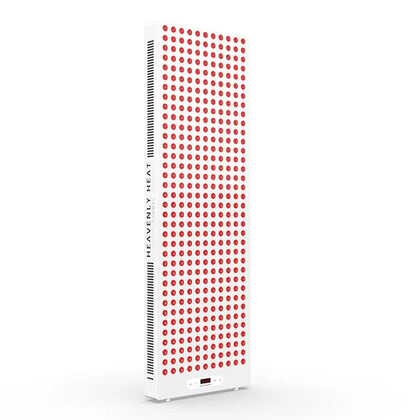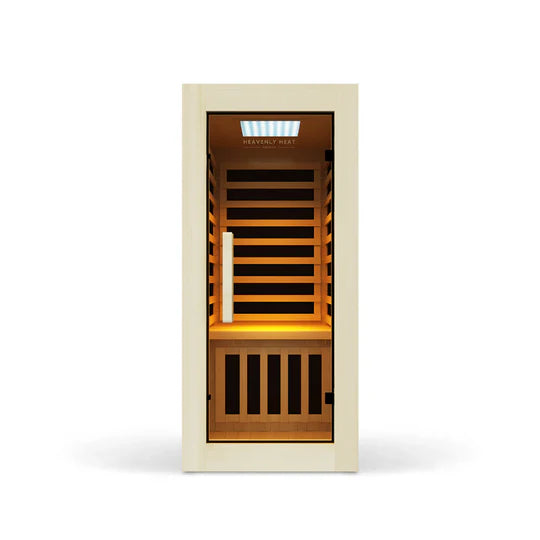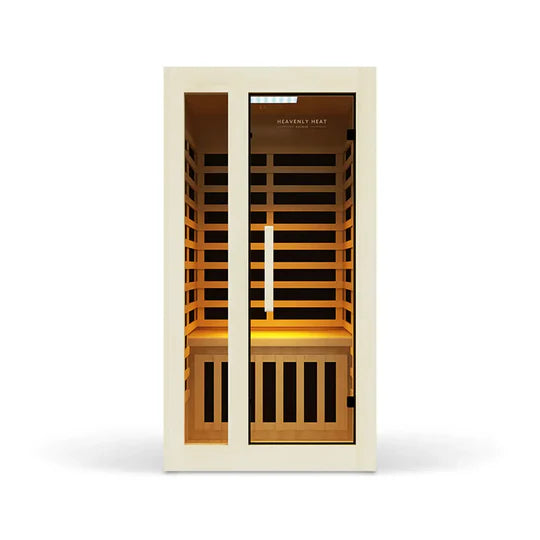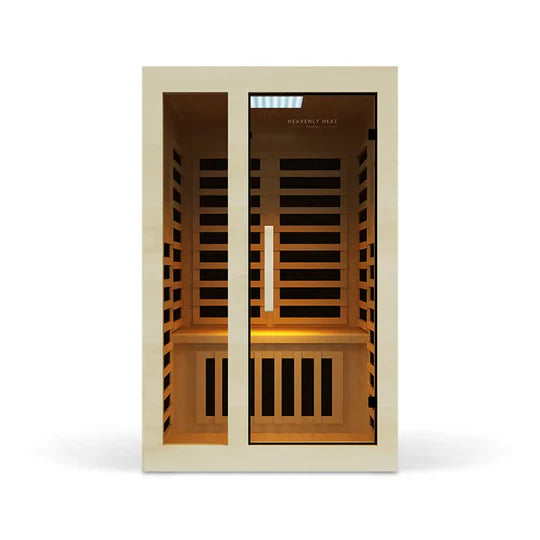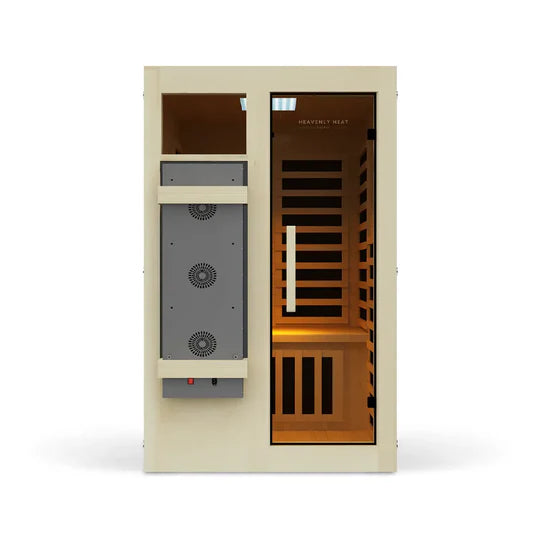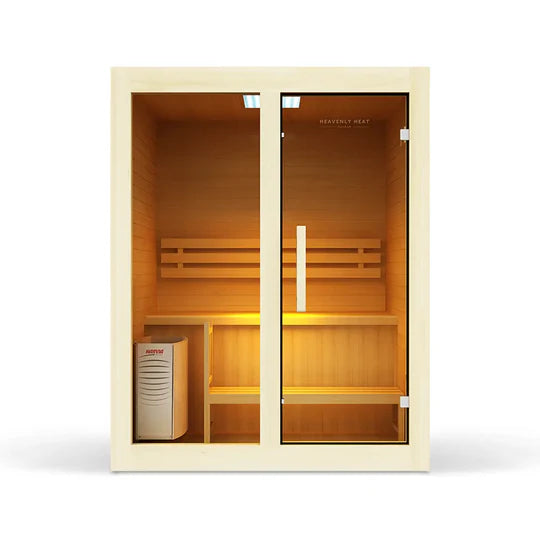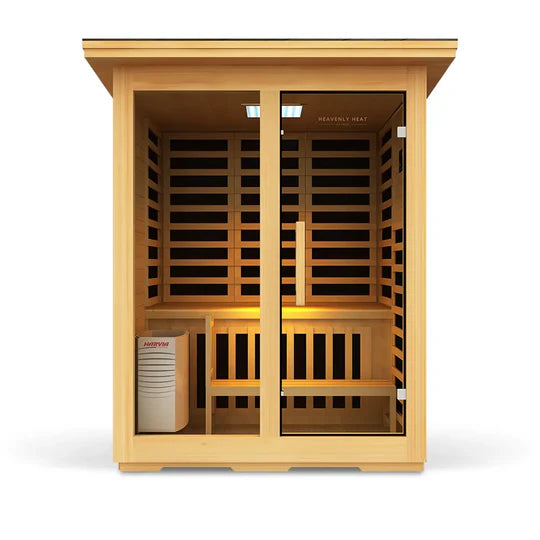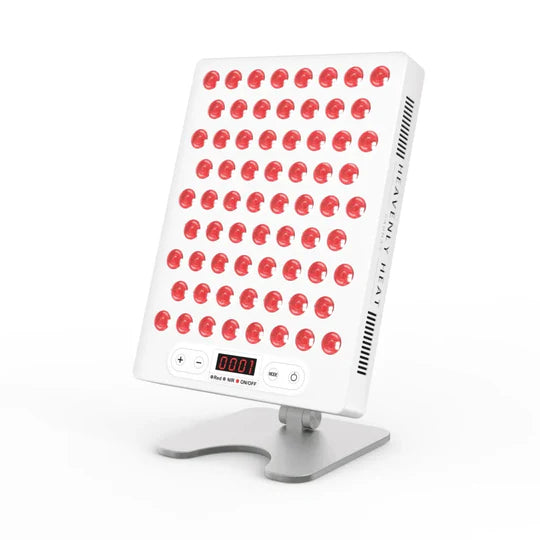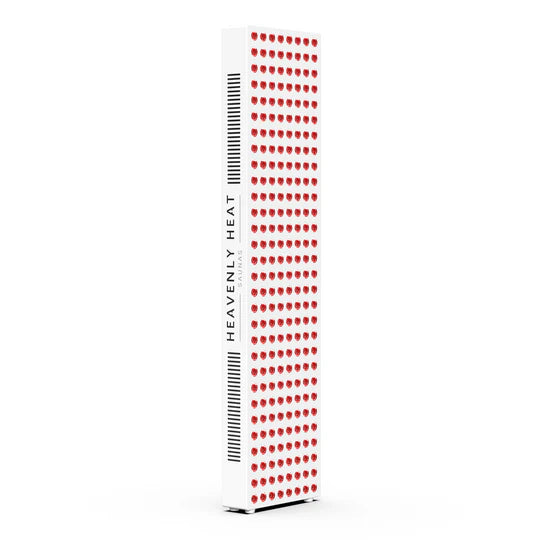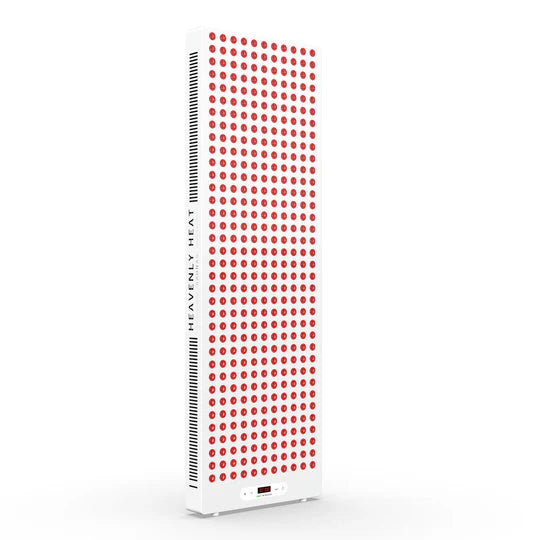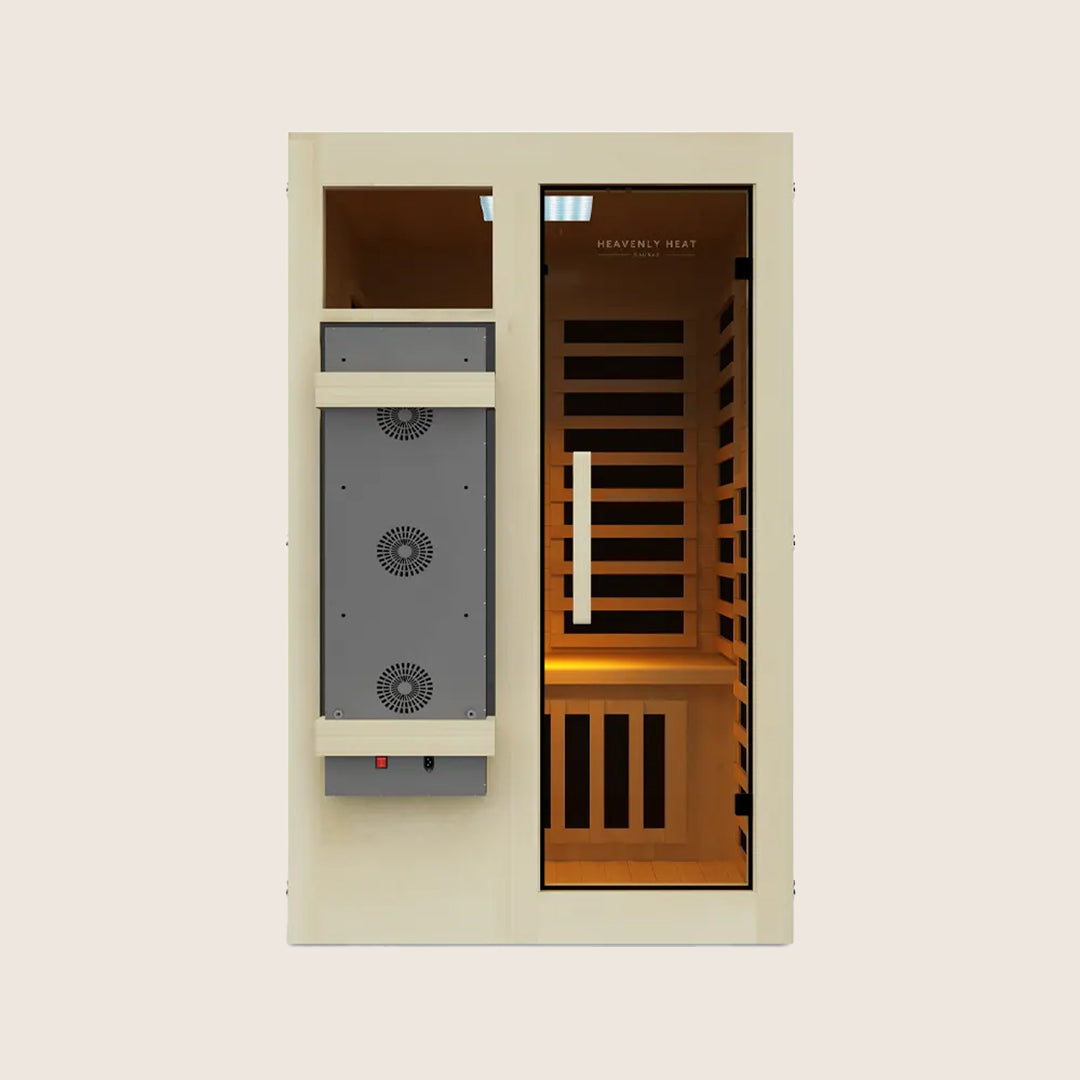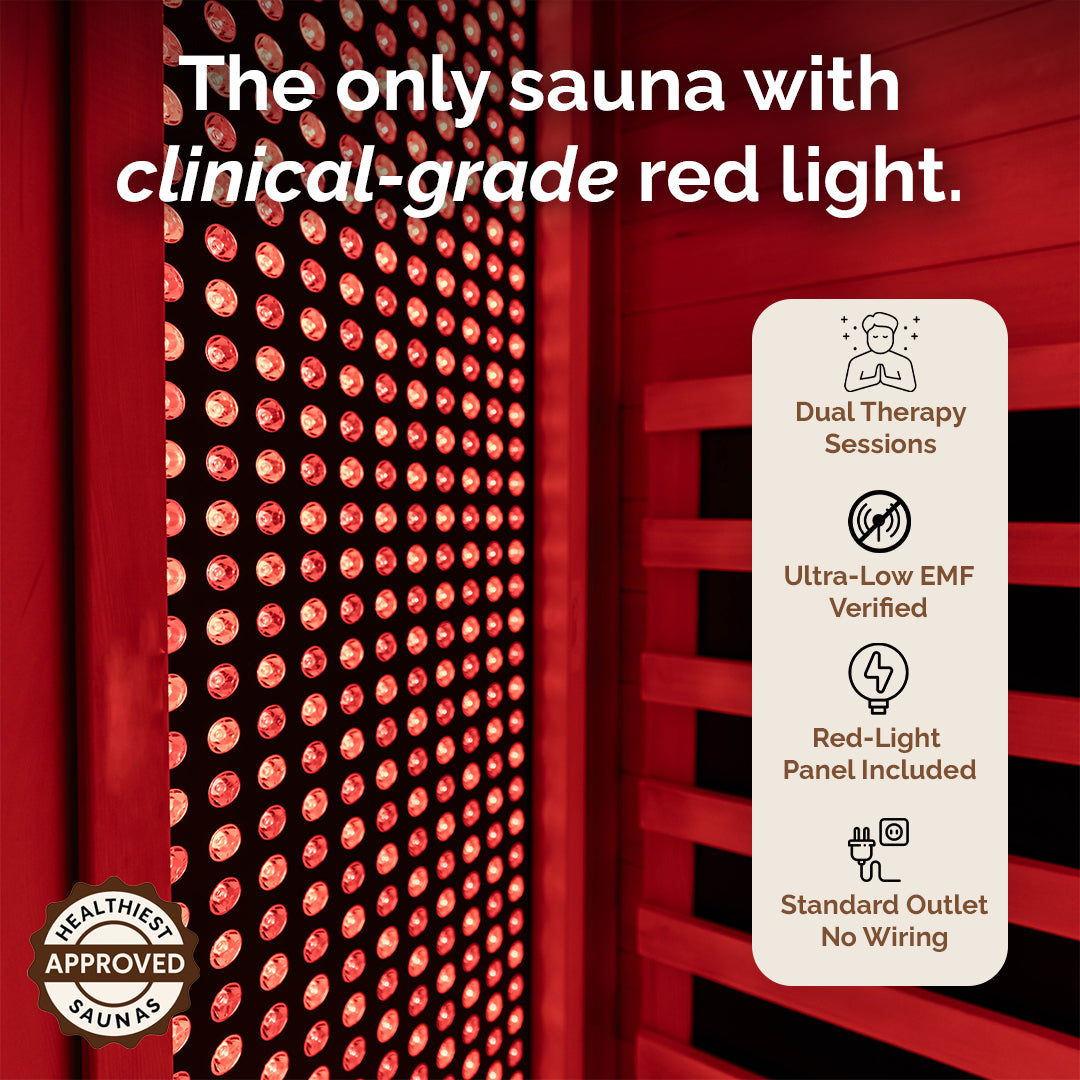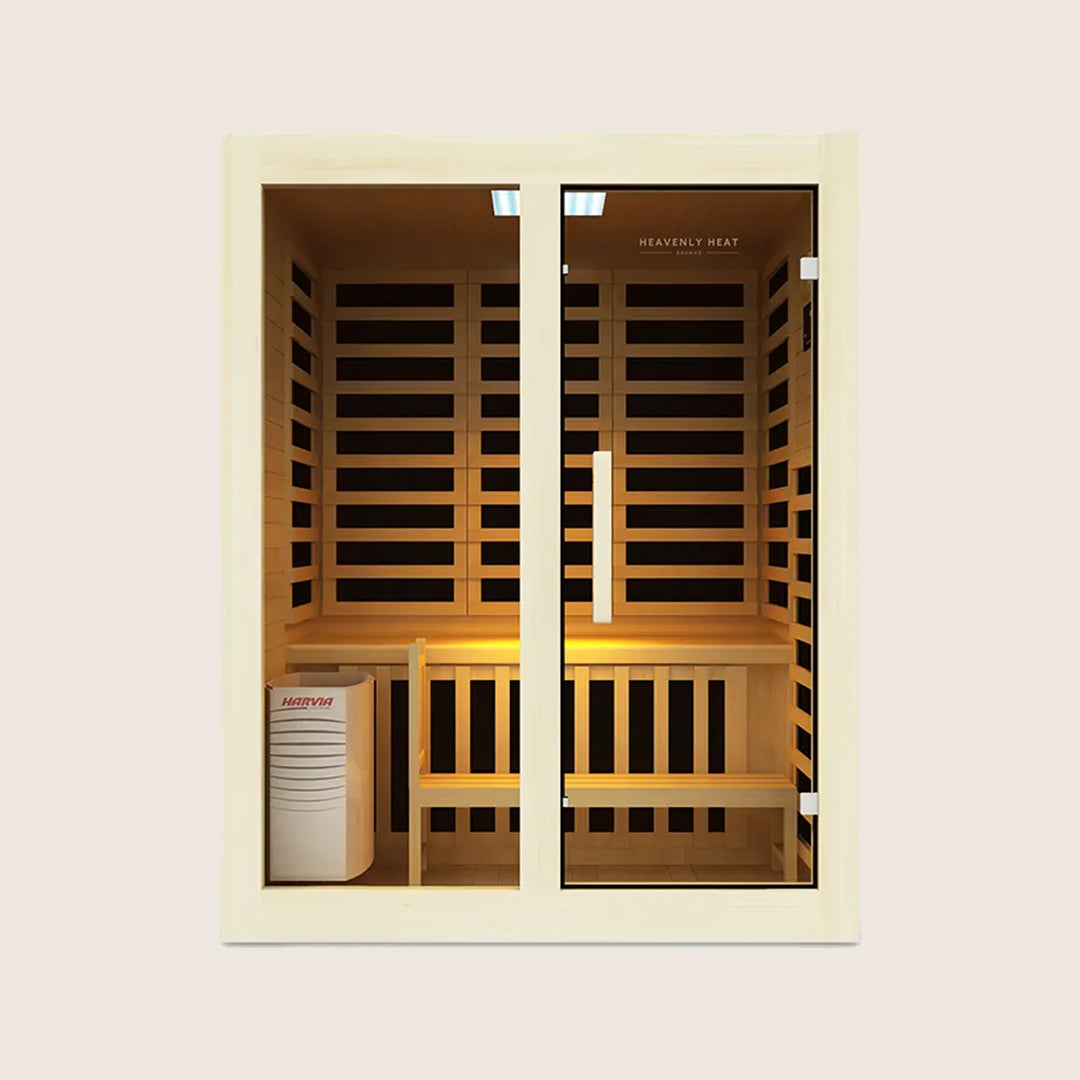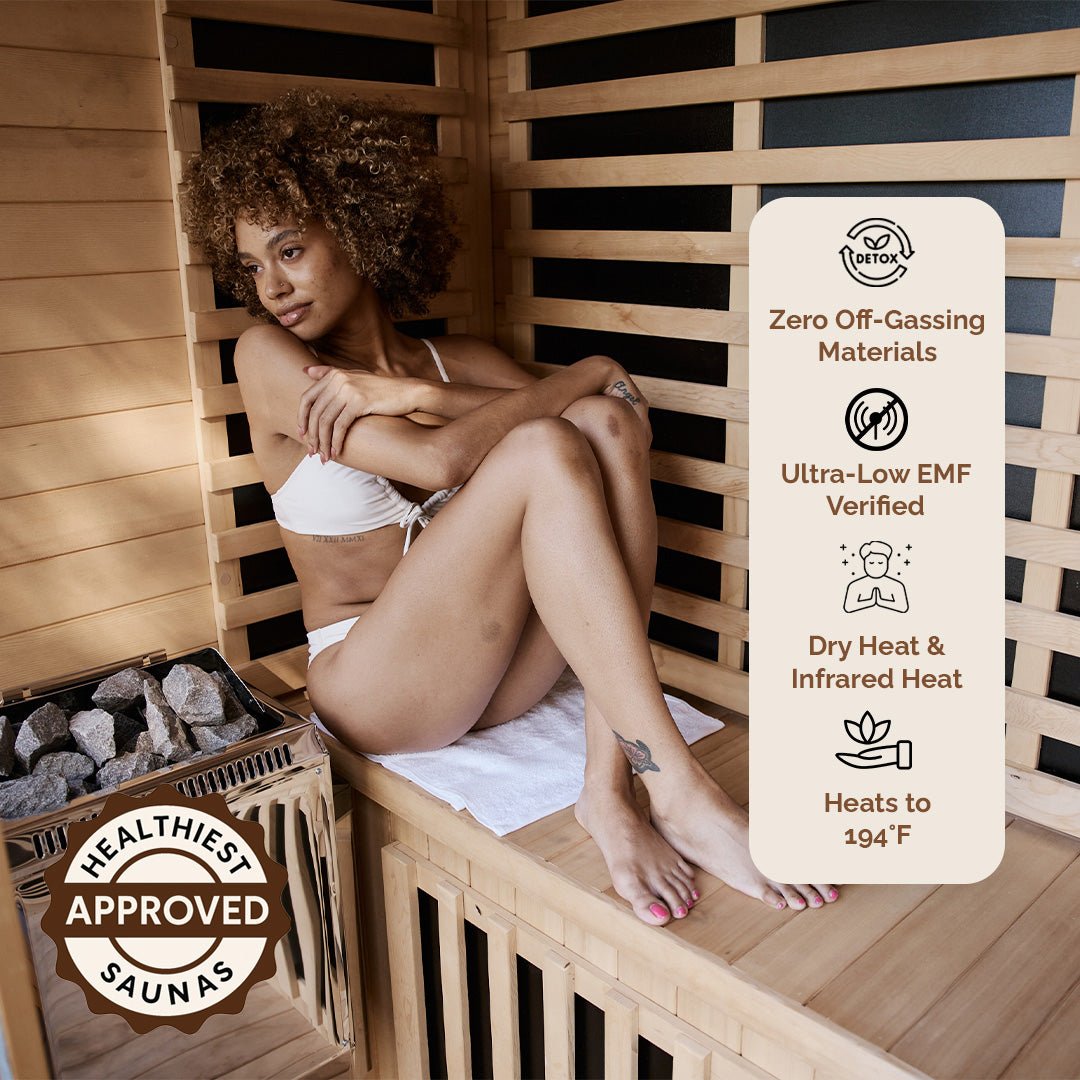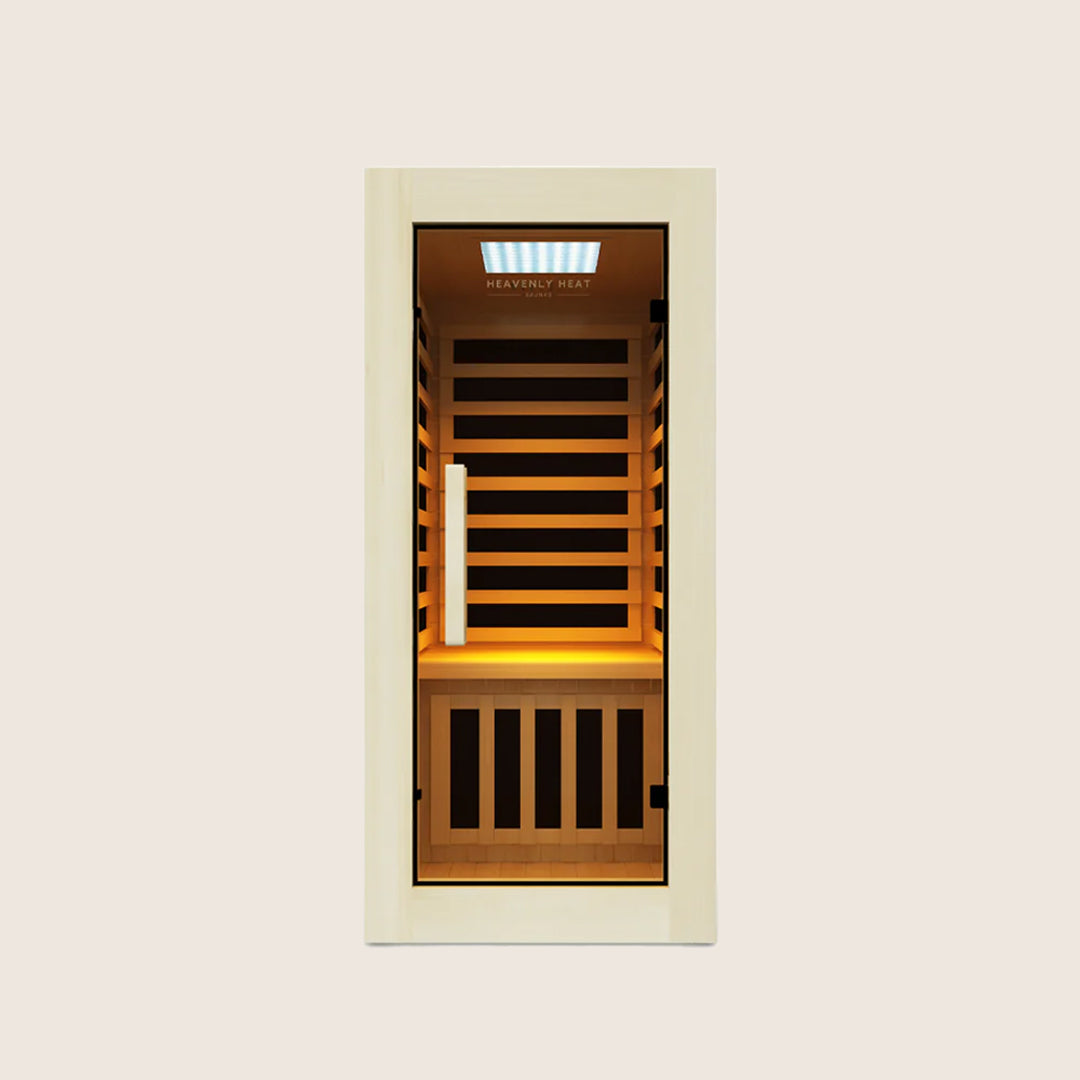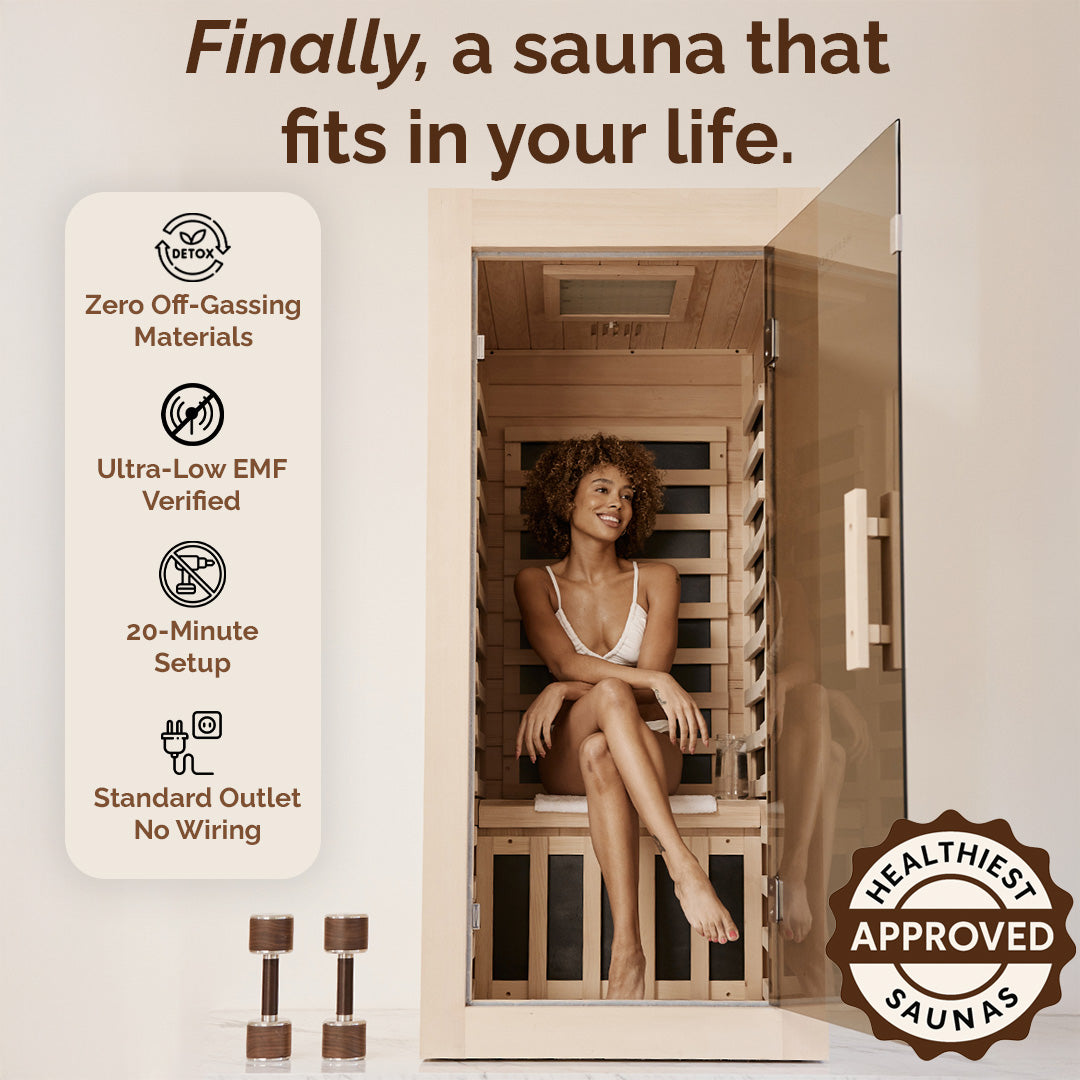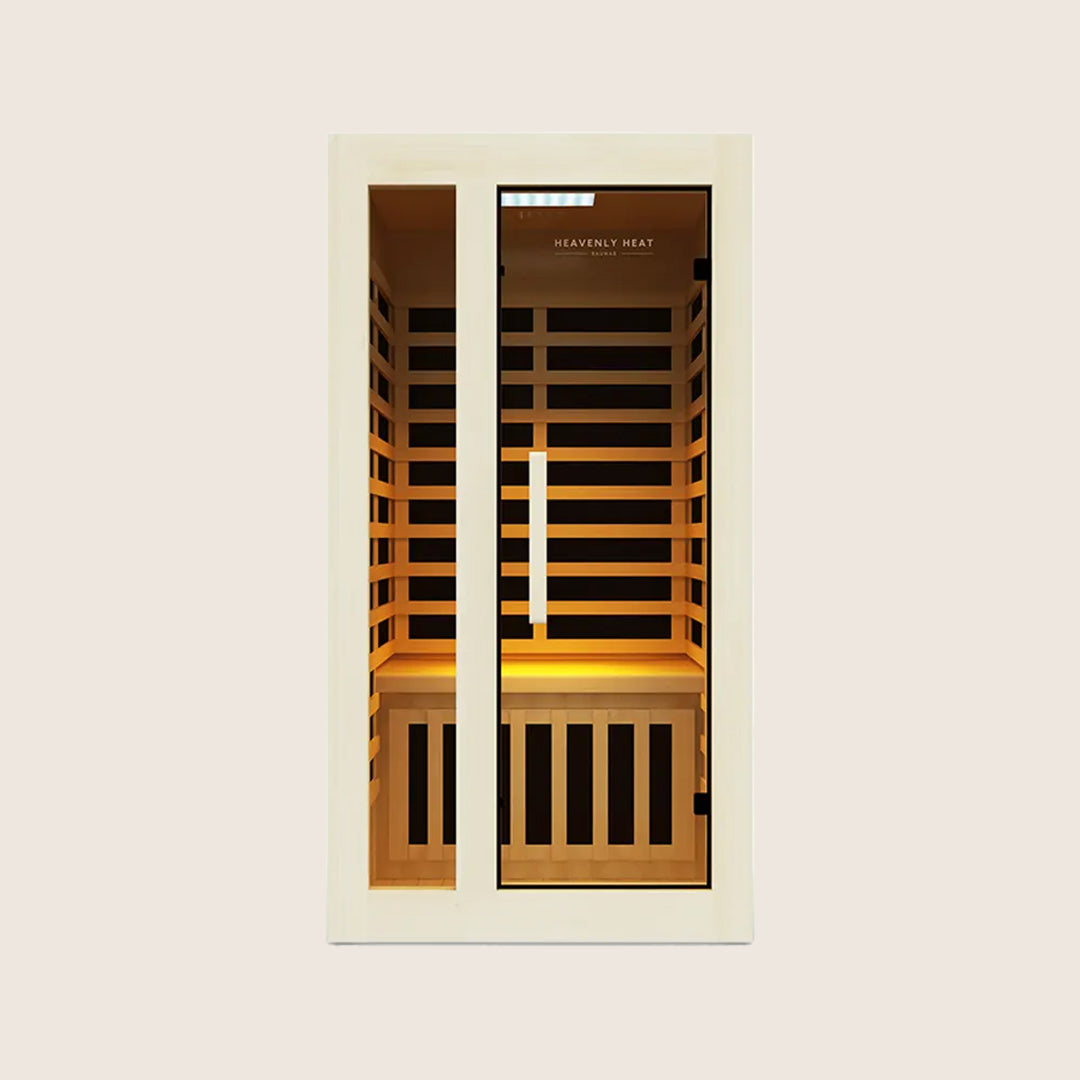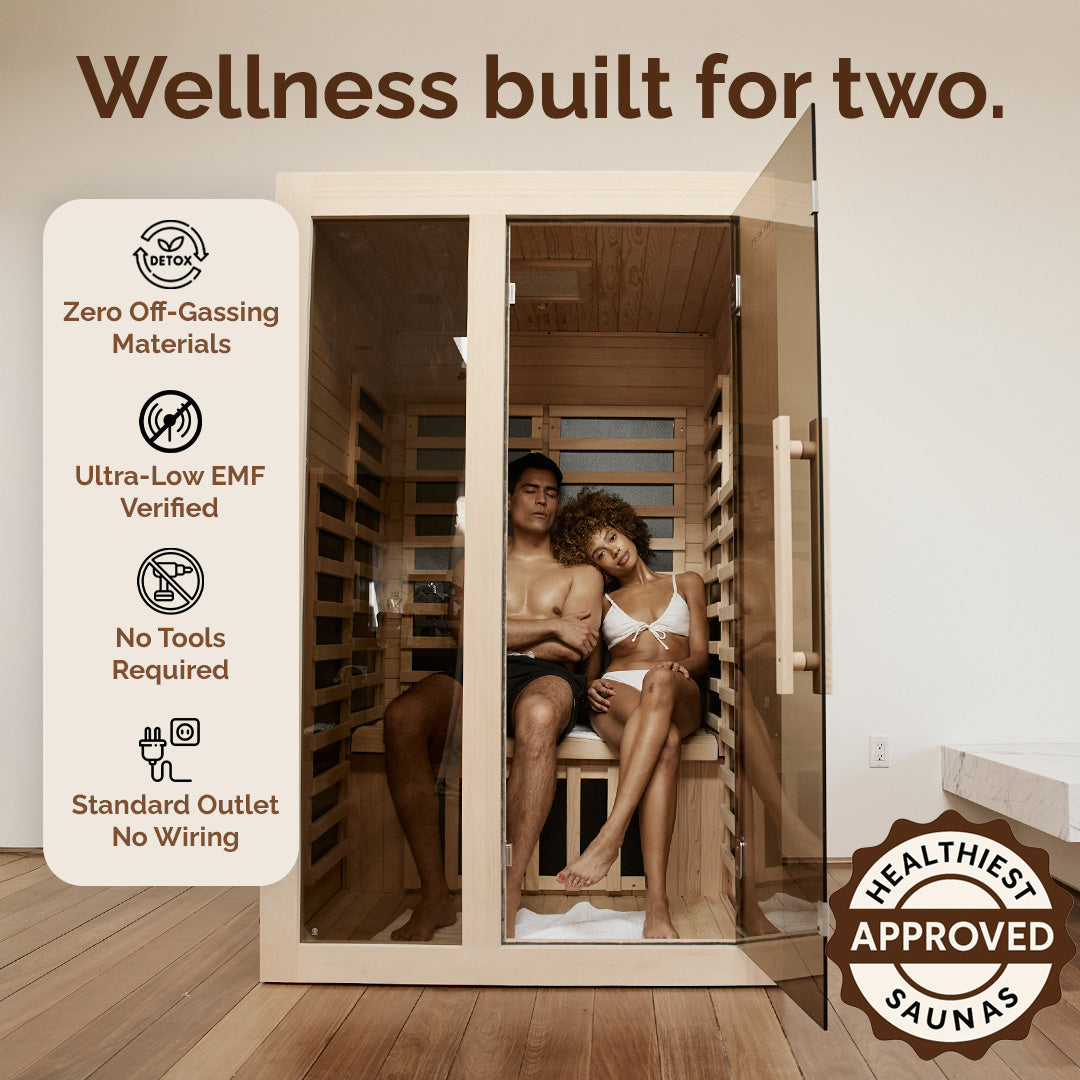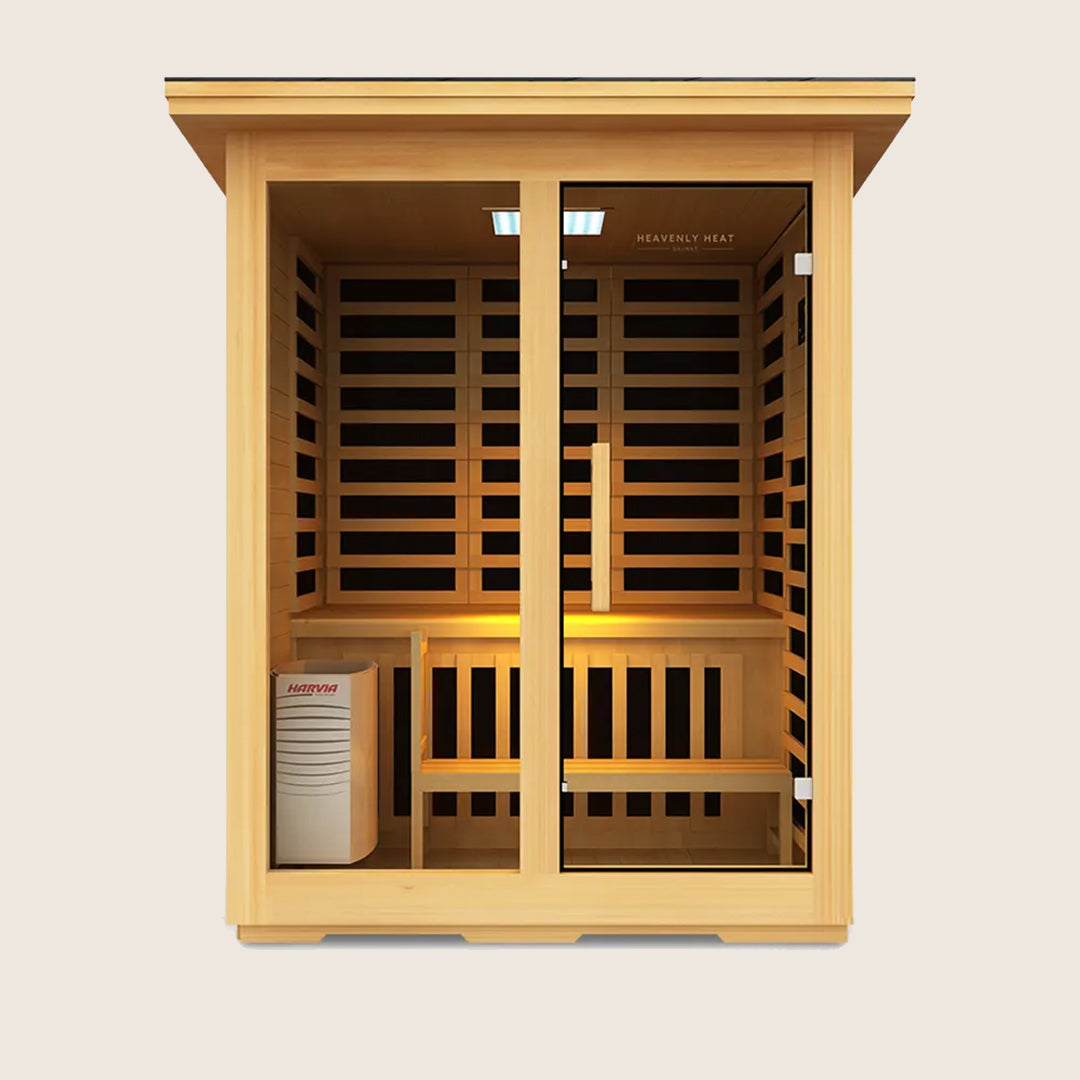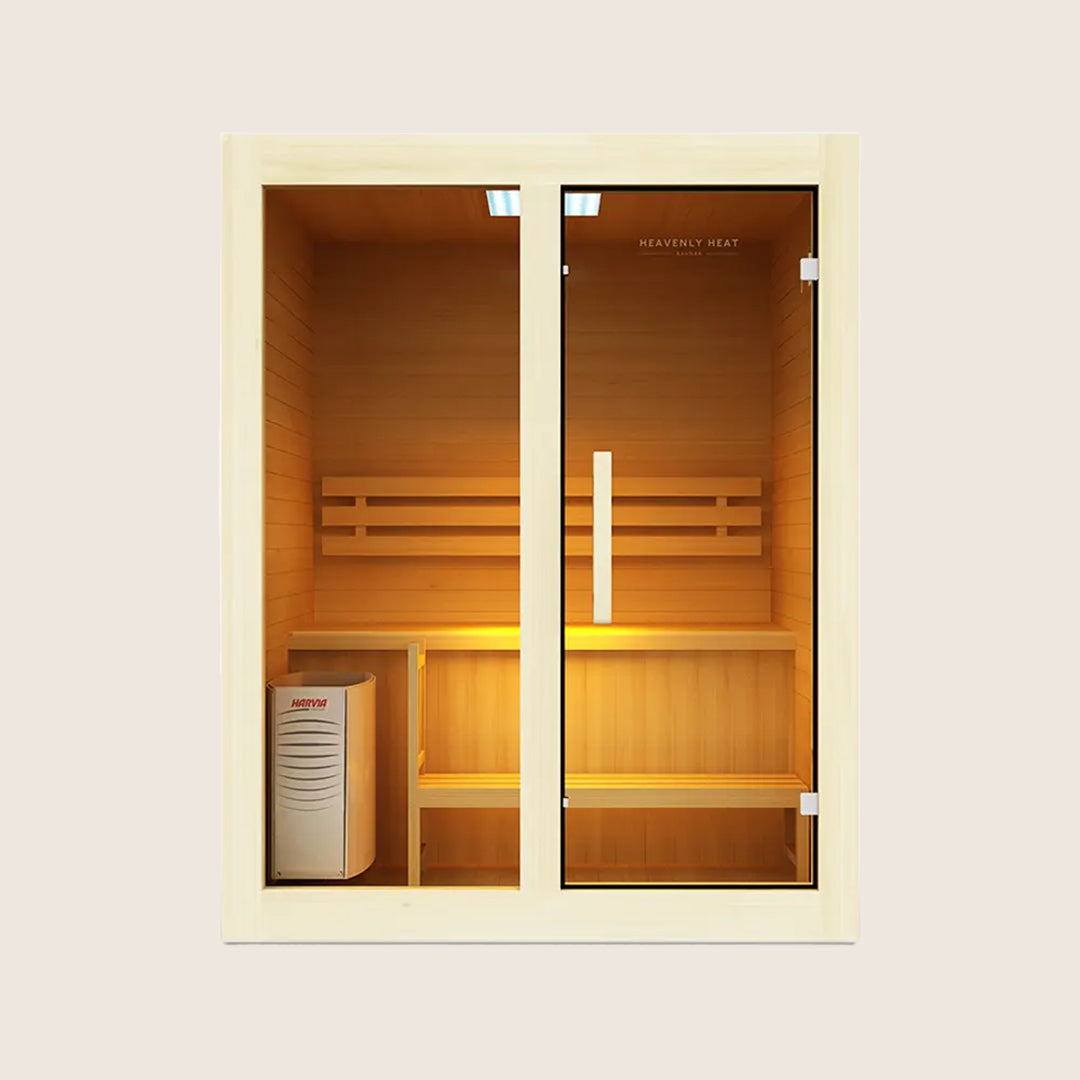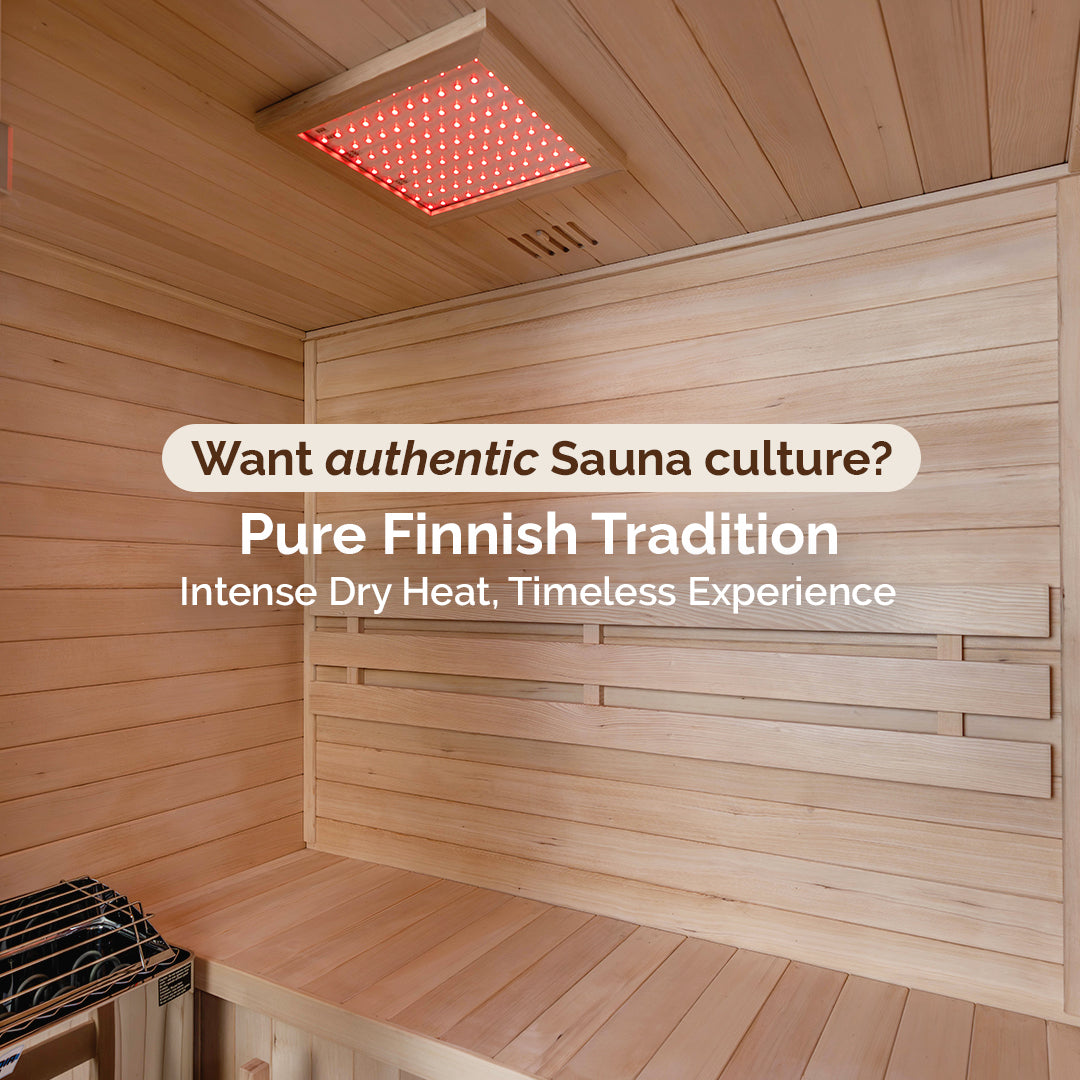How to Make a Sauna Hotter: Effective Tips to Increase Sauna Heat and Improve Performance
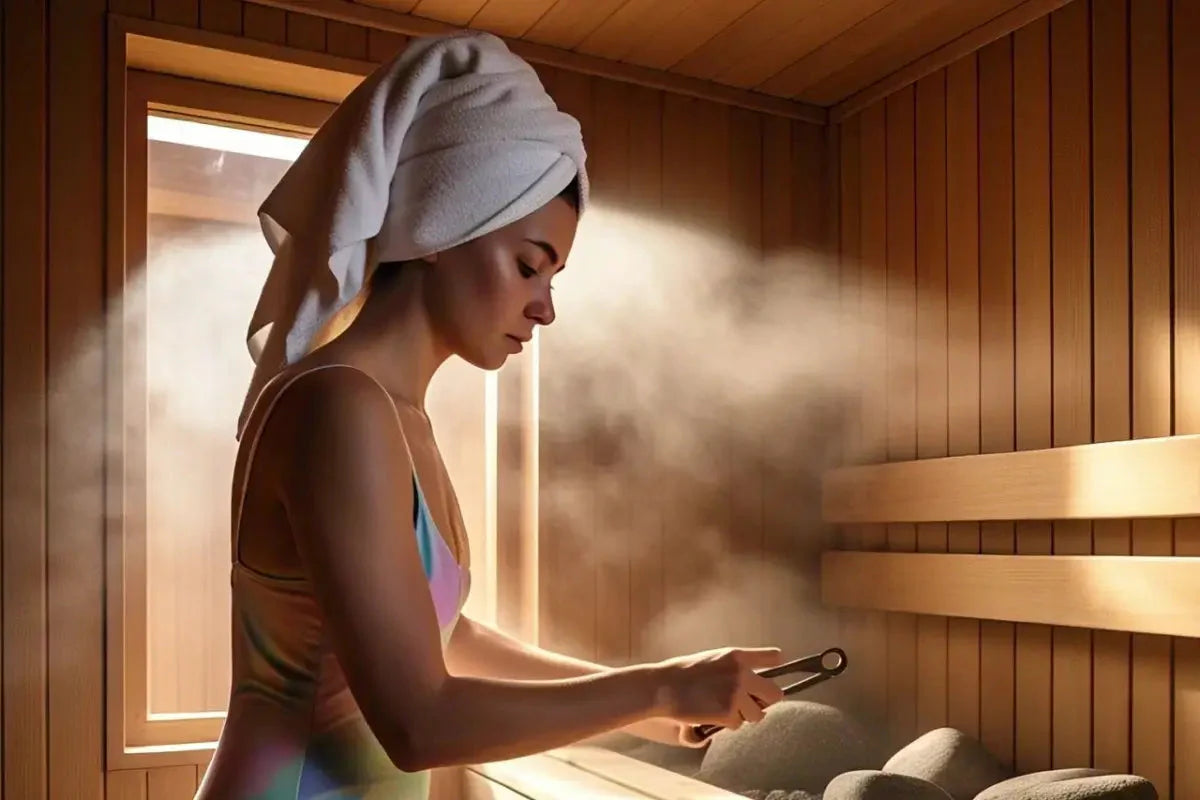
Table of contents
Nothing ruins a relaxing sauna session like lukewarm heat. If your sauna isn’t reaching the high temperatures you crave, you are missing out on its full benefits.
Poor insulation, weak heaters, or ventilation issues could be the problem. But don't worry, this guide covers simple yet effective ways to maximize heat and enhance your sauna experience.
Key Takeaways
-
A properly sized heater and good insulation are essential for higher sauna temperatures.
-
Keeping the door shut and sealing gaps prevents heat loss.
-
Sauna stones and proper airflow help maintain even heat distribution.
-
Preheating efficiently and using heat-reflective materials improve warmth.
-
Smart thermostats provide better temperature control and energy efficiency.
Why Your Sauna Isn’t Getting Hot Enough
Several factors can prevent your sauna from reaching high temperatures. A weak heater may struggle, especially if it's too small for your space.
Poor insulation lets heat escape, making it harder to maintain warmth. Small air leaks, often around doors or vents, lower the temperature.
Electrical issues, such as low voltage, can also weaken heater performance. To fix this, check for heat loss points, ensure proper insulation, and verify that your heater matches the sauna’s size for the best experience.

How to Improve Sauna Heating Efficiency
Pick the Right Heater for Best Performance
Choose the right heater type: Infrared heaters use less energy but provide milder heat, while electric heaters reach higher temperatures.
Match wattage to sauna size: A heater that’s too small struggles to heat, while an oversized one wastes energy.
Consider wood-burning heaters: They offer an authentic sauna experience but require more effort to maintain.
Optimize heater placement: Proper positioning ensures even warmth and efficient heating.
Use compact heaters for small spaces: Small home saunas benefit from space-saving electric heaters.

Insulate Properly to Keep the Heat In
Good insulation is key to retaining heat. Fiberglass, mineral wool, and rigid foam trap warmth effectively.
Without insulation, heat escapes quickly, making it difficult to sustain high temperatures.
Aluminum foil works as a vapor barrier, reflecting heat back inside. Since heat rises, the ceiling needs extra insulation.
Outdoor saunas require thicker insulation to combat cold weather. A well-sealed sauna door with weather stripping prevents heat loss and improves efficiency.
Use Quality Sauna Stones for Even Heating
High-quality sauna stones help maintain consistent heat. Peridotite, olivine, and basalt store and release heat effectively.
Low-quality stones crack easily, leading to uneven heating. Proper arrangement—larger stones at the bottom and smaller ones on top—improves airflow and heat distribution.
Stones should be replaced when they start breaking down. Proper air circulation around the heater maximizes performance, and using stones around 2 to 4 inches in size enhances heat retention.

Keep the Door Shut to Prevent Heat Loss
Each time the sauna door opens, hot air escapes, forcing the heater to work harder. A poorly sealed door causes inconsistent temperatures and energy waste.
To check for leaks, place a hand near the edges and feel for escaping heat. Weather stripping enhances insulation, while a strong latch or self-closing mechanism keeps the door shut.
A tight seal reduces energy consumption and helps maintain steady heat for a more efficient session.

Preheat Efficiently Without Wasting Energy
Preheating properly ensures optimal heat retention. The ideal preheat time is 30–45 minutes, depending on heater type and sauna size.
Aim for 150°F before entering. Always keep the door closed while preheating to trap heat.
In colder weather, preheating may take longer, so extra insulation helps. Keeping a sauna warm between sessions can be more energy-efficient than reheating from cold. A timer or smart thermostat optimizes energy use and ensures efficiency.
Improve Airflow for Consistent Heat
Good airflow distributes heat evenly. Proper ventilation prevents overheating or cold spots.
Intake vents near the heater bring in fresh air, while exhaust vents near the ceiling regulate circulation.
Well-placed vents allow fresh oxygen flow without excessive heat loss. Sealing gaps in the sauna door improves heat retention without restricting airflow.
A well-ventilated sauna ensures breathable air while maintaining steady warmth throughout the session.
Use Heat-Reflective Floors and Walls
Heat-reflective materials help maintain high temperatures. Aluminum foil-backed insulation, reflective wall panels, and ceramic tiles on floors bounce heat back into the space.
Wood panels like cedar or hemlock further enhance warmth. Reflective surfaces reduce heating time and sustain heat longer, lowering energy use.
Choosing the right flooring and wall materials improves efficiency, keeping your sauna hotter for longer sessions.
Upgrade to a Smart Thermostat for Better Control
A smart thermostat offers precise temperature control and improves efficiency. Features like programmable schedules, remote adjustments, and auto-shutoff prevent unnecessary energy use.
Some models learn usage patterns and adjust heating cycles accordingly. Look for heat sensors and smartphone compatibility for convenience.
Setting optimal temperatures between 170–190°F ensures an efficient heating process.
Smart thermostats maintain steady heat without overworking the heater, making sauna sessions more enjoyable.
Choosing the Best Heater for More Heat
Check the Wattage
The right wattage depends on your sauna’s size. Small saunas need a 3kW to 4.5kW heater, while larger ones require 6kW or more.
If wattage is too low, the sauna struggles to heat. Excessive wattage wastes energy and causes uneven heating.
Consider the Type of Heater
Traditional electric heaters warm the air, while infrared models heat the body directly.
Infrared saunas provide quick warmth but don’t reach as high temperatures as traditional ones.
Gas heaters are efficient but require proper ventilation. For fast and consistent heat, a high-quality electric heater with sauna stones is a solid choice.
Look for Adjustable Thermostats
An adjustable thermostat gives better control over heat levels and improves energy efficiency.
It prevents overheating or insufficient warmth. Some advanced models feature smart controls that automatically adjust based on room conditions.
Choose a Heater with a Fan
A built-in fan helps distribute heat evenly, reducing cold spots. Fan-assisted models circulate hot air more effectively, improving heating speed and consistency.
They are especially useful for larger saunas where natural convection isn’t enough.
Opt for Infrared Heating for Quick Warmth
Infrared heaters deliver heat instantly by warming the body rather than the air. They work well for quick sessions but don’t provide the same intense heat as traditional sauna heaters. Proper placement of infrared panels improves heating efficiency.
Consider the Room Size
A sauna’s size affects heater performance. For every cubic foot, you need about 10 watts of heating power.
Small saunas require less power, while larger ones need more. Ceiling height also impacts heating efficiency.
Use Proper Placement
Placing the heater near the floor helps heat rise naturally. Avoid placing it too close to walls, as this reduces circulation.
Proper ventilation and heater positioning ensure even heat distribution and prevent cold zones.
Does Humidity Impact Sauna Temperature?
Humidity influences how hot a sauna feels. Pouring water on sauna rocks increases humidity, making the heat feel more intense.
However, too much moisture can make breathing difficult. Traditional Finnish saunas balance heat and humidity for comfort. While humidity affects sensation, it doesn’t increase actual temperature.
How to Prevent Heat Loss and Improve Heat Distribution
Poor insulation, gaps, and incorrect vent placement cause heat loss. Thick insulation in walls and ceilings traps heat, preventing temperature drops.
Sealing small gaps in doors and panels helps retain warmth. Proper heater placement and vent positioning support natural heat circulation.
Sauna benches also affect temperature levels, with higher seating providing more intense heat.
| Factor | Positive Practice | Negative Practice |
| Door Sealing | ✅ Weather stripping for tight seal | ❌ Gaps around the door let heat escape |
| Insulation | ✅ Thick walls & ceiling insulation | ❌ Poor insulation leads to heat loss |
| Ventilation | ✅ Properly placed intake & exhaust vents | ❌ Improper venting causes uneven heat |
How to Preheat Your Sauna Properly
Preheating ensures the best sauna experience. Most saunas take 30–45 minutes to heat, while wood-burning models may require up to an hour.
Aim for a preheat temperature of 150–190°F. Keeping the door closed speeds up heating.
Good insulation and heated sauna stones improve heat retention. You’ll know it’s ready when the air is evenly warm, and the stones produce steam when water is added.
| Sauna Type | Preheat Time (Minutes) |
| Infrared Sauna | 10-15 |
| Electric Sauna | 30-45 |
| Wood-Burning Sauna | 45-60 |
How Different Sauna Types and Sizes Affect Heat Levels
Sauna size and type impact heating efficiency. Smaller saunas warm up faster, while larger ones take longer.
Wood-burning saunas produce intense heat, whereas electric heaters are easier to control.
Infrared saunas provide mild heat but don’t retain warmth as long as traditional models.
For the hottest experience, a well-insulated wood-burning sauna in a smaller space works best.
FAQs
Can the color of sauna walls and ceiling affect heat retention?
The color of sauna walls and ceiling can indeed affect heat retention. Dark-colored walls, like deep reds or browns, tend to absorb more heat, which can make the sauna feel warmer. This is because darker colors absorb light and heat better than lighter ones. So, if you want to boost heat retention, consider using these darker tones. On the other hand, light-colored walls can reflect some heat, making the sauna feel cooler, which may lead to longer heating times. Speaking of ceilings, their color can also play a role in maintaining temperature. Darker ceilings, like dark wood or black finishes, trap heat more effectively, helping the sauna stay warm. Overall, choosing darker colors for both walls and ceilings can reduce heating time, making your sauna hotter and more efficient.
How does the thickness of sauna walls impact heating efficiency?
The thickness of sauna walls plays a crucial role in heating efficiency by directly affecting heat retention. Thicker walls help trap heat inside, allowing the sauna to stay hotter for longer. On the other hand, thinner walls can lead to quicker heat loss, making it harder to maintain a consistent temperature. Insulation is another key factor. Well-insulated walls improve the sauna's ability to retain heat, which reduces the time and energy required to reach the desired temperature. Thicker insulation in the walls boosts heating efficiency by minimizing heat escape. Additionally, wall thickness impacts humidity levels. Thicker walls tend to maintain moisture better, creating a more comfortable environment for your sauna sessions.
Is there an optimal ceiling height for better sauna heat distribution?
When it comes to sauna heat distribution, ceiling height plays a big role. A lower ceiling can help heat a sauna more quickly and evenly because the heat stays concentrated at a lower level. In contrast, a high ceiling can lead to uneven heat distribution, with warm air rising and leaving the lower areas cooler. This can make it harder to maintain a consistent temperature. The ideal ceiling height for efficient heat distribution is usually between 7 and 8 feet. If the ceiling is too high, heat retention becomes less efficient, and the sauna may feel cooler. So, a balance in ceiling height is crucial for the best sauna experience.
Can adding more sauna stones improve heating performance?
Adding more sauna stones can significantly improve heating performance in your sauna. Sauna stones help maintain a consistent temperature by absorbing and releasing heat, which creates a steady, comfortable environment. The more stones you have, the better the heat retention, as they store more warmth. This can also help to reduce heat fluctuations, ensuring that the sauna stays hot for longer periods. With more stones, the sauna can heat up faster, as they distribute heat more efficiently. The placement of the stones is also crucial – when arranged properly, they allow for even heat distribution. Additionally, with increased volume, sauna stones can retain heat longer, providing a more consistent and enjoyable sauna experience.


